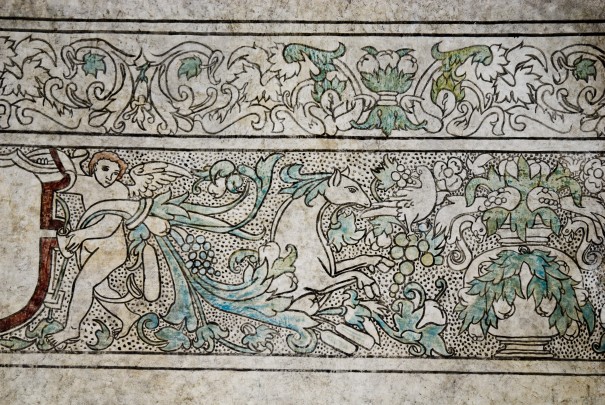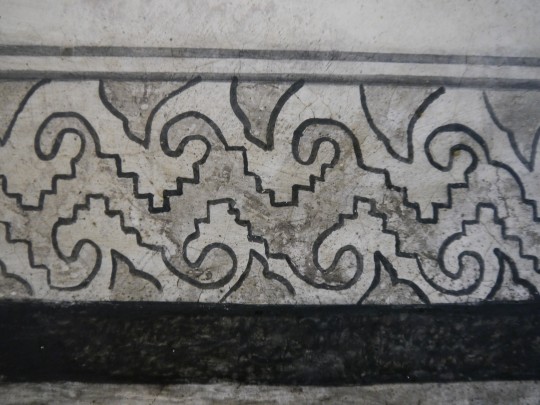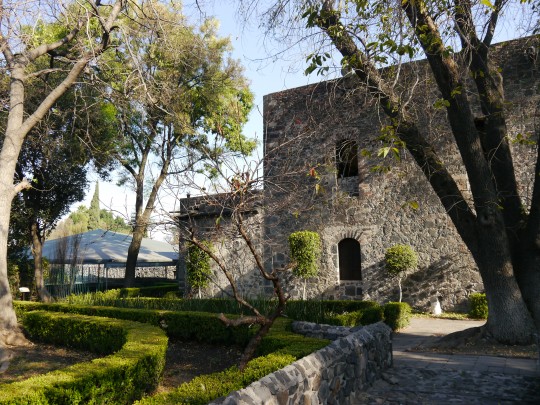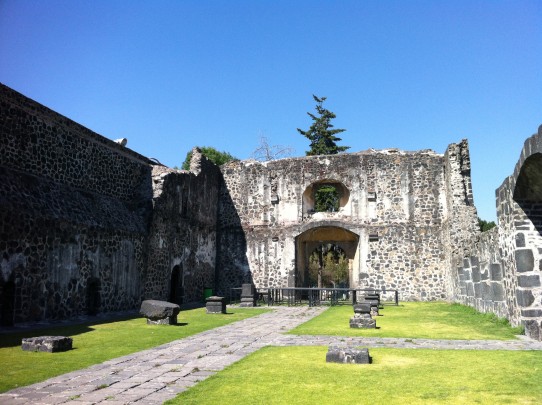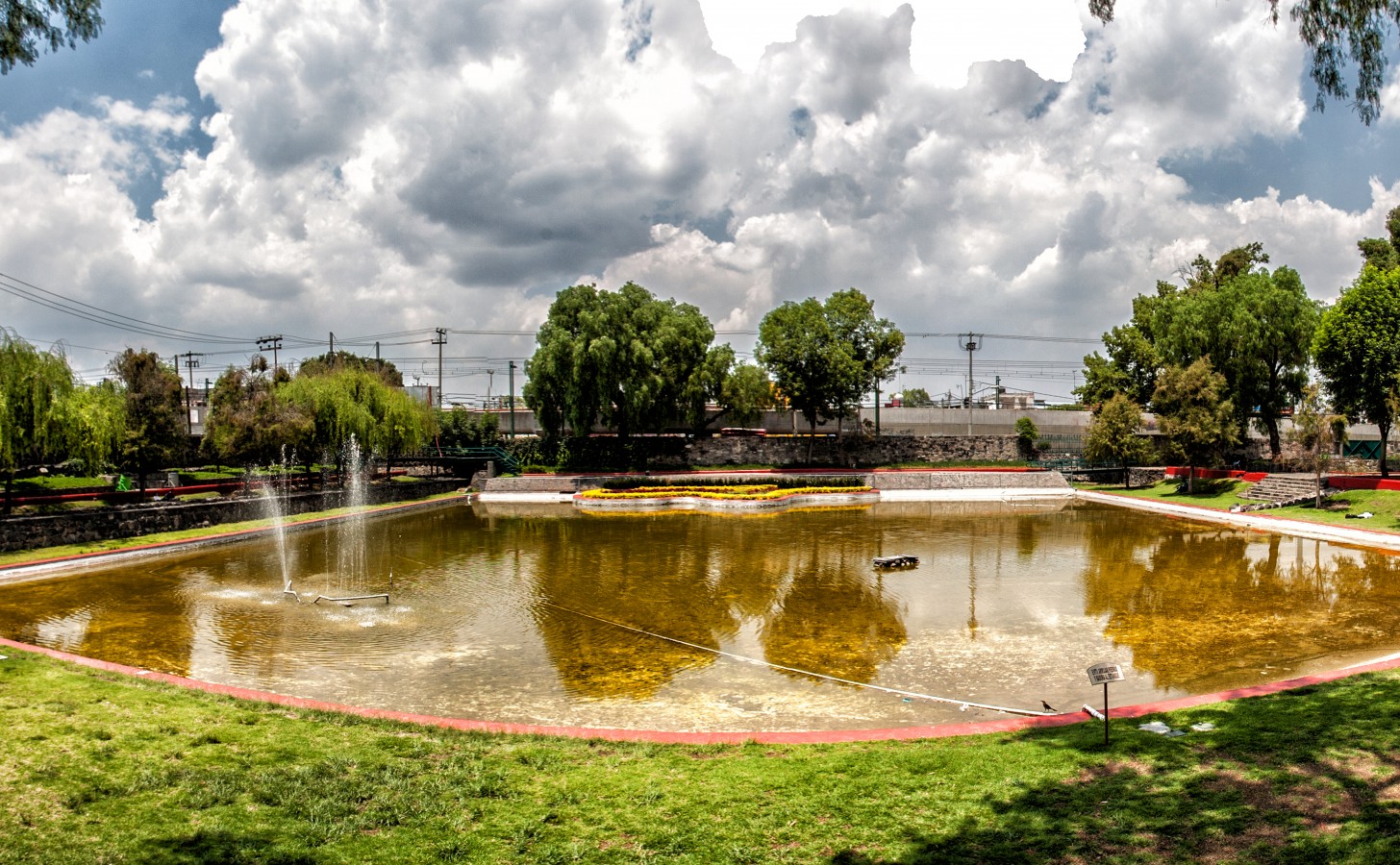Entering the complex across the beautiful, historic park, a project designed by landscape architect Mario Schjetnan, gives the sense of entering another time, another place, where the city’s clamor and traffic are banished beyond the reach of the senses. The cloisters’ silence and tranquility are an integral part of visiting this monastery.
The grisaille-decorated walls in the upper cloister show the skill of the sixteenth-century painters (Gorbea, 1959). Inspired by Renaissance art, they reveal outlines of figures depicted in each fresco: stylized facial traits with a sense of depth and movement. The themes designed for the friars residing in the upper part of the monastery were centered on the Augustinian saints and biblical episodes that accompanied the daily meditations of the temporary occupants of the cells.
Present in every frieze of the lower cloister, as if in a cave, the order’s symbols are in plain view yet remain hidden from the uneducated eye: the grape, the acanthus flower, the reeds, and the fantastical figures combine plants and animals with fluidity and exuberance, creating a feast for the senses. Colored medallions are dedicated to the saints of various religious orders who are given attributes, distinguishing them almost perfectly. More than thirty well-preserved cartouches reveal the traits of every figure: a diminutive soul hangs from a set of scales, held by the Archangel Michael and painted in surprising detail; figures saying prayers emerge from the jaws of an animal at the feet of St Nicholas of Tolentino; a child asks for bread from a bishop known as St Nicholas of Bari; a young man wounded by arrows alludes to St Sebastian. These attributes are contributions established in the Council of Trent that was held shortly before the Conquest.
It is interesting to identify the pre-Hispanic symbols also depicted in the friezes: the glyph of Culhuacan’s arched hill, the “atlacuezona” or solar flower, and also the fusion of different environments, such as the Tebaida, whcih clearly shows the lacustrine landscape around this colonial-period construction, set against the desert backdrop identified by a palm tree, thereby reflecting on the origin of the order and its withdrawal into the desert.
Inside the complex itself, we have the further opportunity to witness the “fusion” of two cultures, with a major pre-Hispanic collection from the slopes of the Cerro de la Estrella: archeological artefacts and remains from the first, second and third Aztec periods, which also show us the close connection with Teotihuacan 4 and confirm 670 AD as the date attributed by Chimailpain to the foundation of Culhuacan (Séjourné, 1970).
The original church shows some architectural vestiges such as the three naves, with arches running along the sides, which used to support the wooden roof made of carved timber beams that collapsed after years of neglect. Also on view are the confessionals, attached to the wall, one of the features exclusively designed for evangelical work in Mexico (Kubler, 1982).


